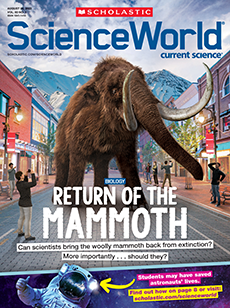For the past 20 years, scientists have been teaming up with Antarctica’s seals to study the ocean. Researchers glue sensors to the seals’ bodies. These devices then collect data as the animals swim under the ice. When the seals shed their fur the following year, the sensors fall off.
So far, seals have collected more than 400,000 measurements of water temperature and salinity, or salt levels. This helps scientists understand how climate change is affecting the ocean environment. The sensors “allow us to track how the oceans are changing and how seals respond to those changes,” says Clive McMahon, a marine scientist at the Sydney Institute of Marine Science in Australia. This long-term monitoring project provides valuable insights into Earth’s oceans—all thanks to the sleek underwater explorers helping scientists learn more about our planet.
